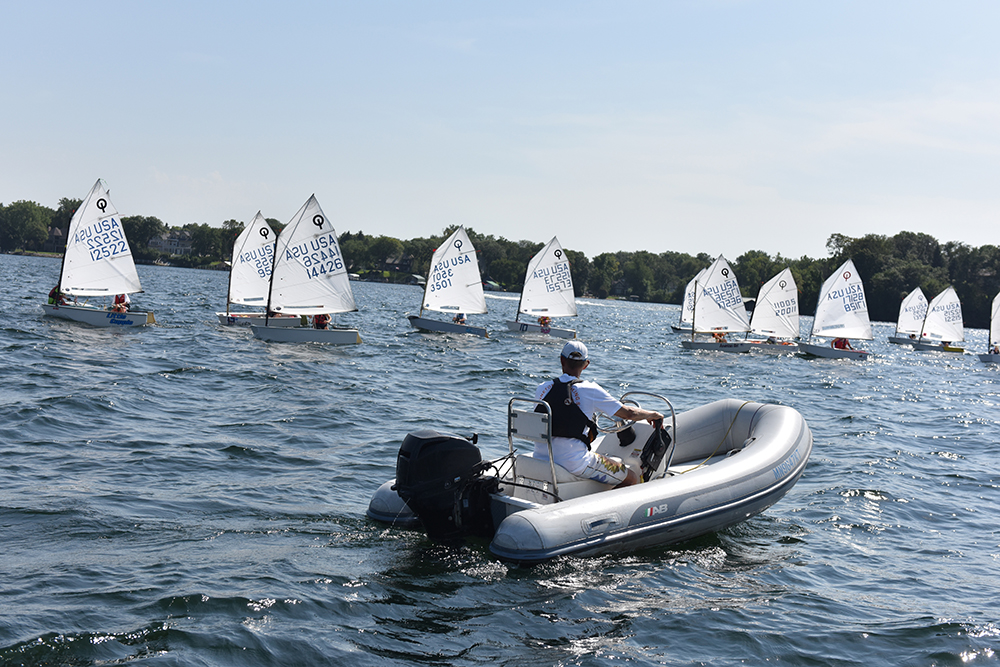Wind Direction
By Gordy Bowers

Change of the wind strength will change your three speed control basics: weight, sail trim, and steering.
Wind direction is next most important, because it affects your strategic decisions based on your course position and fleet position.
Start studying wind on shore by looking at the sky. Observe the shape and direction of the clouds. Paul Elvstrum, the first three time Finn class Olympic gold medalist, once said “change the sky and you change the wind”. Good advice! The low level cloud cover – cumulus, stratus and stratocumulus – are most important. Look to see what direction they are moving, compared to the wind direction on the water. Oftentimes, the wind at eight or nine in the morning, after a cold night, will shift to direction of the clouds when the temperature warms up between ten and twelve noon, during your morning race. Conversely, middle and upper cloud shape and movement usually indicate later changes in the weather.
Once on the racecourse, it is time to get a feel for the range of wind strength and direction. Wind speeds are shown by ripples and waves, and compared by whether you are sitting in, or hiking full or part time. At close range, thirty to a hundred feet, look at the waves and notice whether the ripples are in line or angled across the waves’ grid pattern. Further out – from one hundred feet to two hundred yards – look at the leading edge of the puff.
Upwind or downwind, I strongly recommend using side stay telltales or a masthead fly. They show you the next puff, or wind shift.
When beating within half a mile from shore, the short duration puffs have a semicircular leading edge. The middle axis will be shifty. But, the direction will also depend on whether you intersect the front, middle, or back edge. The leading edge usually will have no change, or a slight header. The back edge can be a big lift. Connect the puffs to work the back edge when sailing upwind.
At about a half mile and farther from shore, the long puffs are much larger, and last longer. They usually have straight leading edges. In long puffs, the wind is steadier, and will shift less at the edges. Even further from shore, the wind strength difference from puff to lull is much less, which makes it more difficult to read direction. The best strategy is to sail to next big puff, and to be on the long tack or gybe toward the next mark. Sail toward the “dark water”.
As a young racer, I noticed Buddy Melges, the Midwest scow builder, champion and Olympic gold medalist, was always out on the water early before races, getting a feel for the wind of the day.

